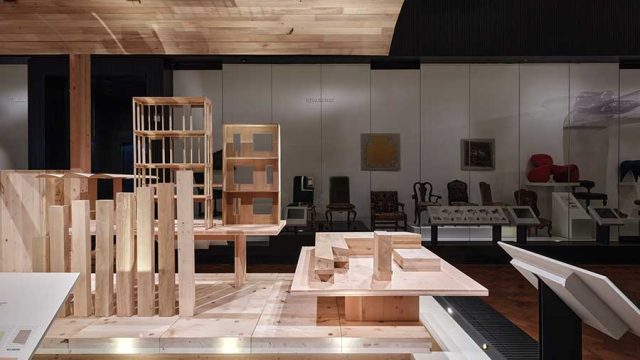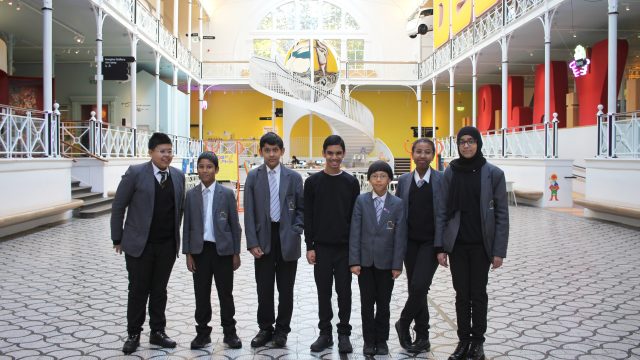If you are familiar with £20 Scottish banknotes, you might recall that they feature the renowned Forth Bridge near Edinburgh, a sensational innovation in the 1880s. What you might not have noticed is that they also depict a human model of the same bridge. Forth Bridge’s engineer Benjamin Baker, his colleague John Fowler and their team of engineers used three men, two chairs and construction materials to illustrate the principle underpinning the bridge’s construction – a cantilever. The model became almost as famous as the bridge itself, but not all its versions conveyed the same image of reliability.
The Forth Bridge living model was devised to explain the cantilever concept in a simple way. But it was also part of a wider strategy to build up confidence and regain trust in engineering innovation. New techniques and materials were being developed and applied in bridge construction in the mid 19th century. Unfortunately a number of failures led to casualties and spread skepticism. In 1879, for instance, the Tay Bridge disaster caused an estimated 75 deaths. Such images took hold of the public’s imagination. The Forth Bridge’s living model was thus a way of ‘building bridges’ with the public.
Hanging by a thread
Forth Bridge’s engineers created one of the first living models of the bridge in 1885. A closer look at the photograph, however, makes me question if the model was successful, both in explaining the cantilever and transmitting confidence.
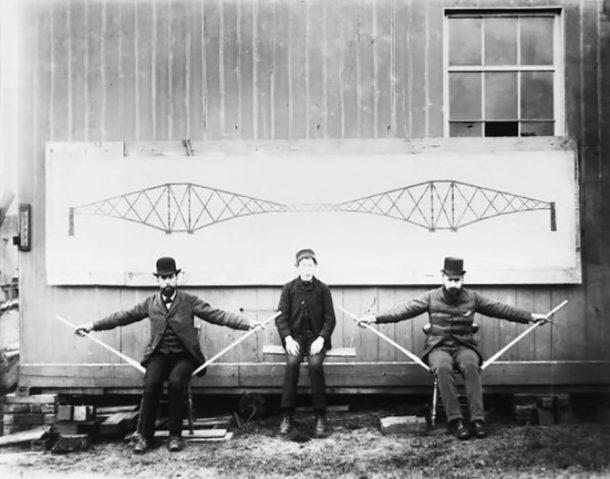
The building in the background is not set on the ground; it is supported by construction materials, creating a feeling of uncertainty and improvisation. The composition is off-centre, and the window and the construction site are distracting. The wrinkled drawing on the wall looks makeshift. There are construction materials scattered around, making it difficult to see what is holding the wooden sticks. Wooden boards under the left chair try to compensate the unevenness of the ground, aggravating the sense of precariousness.
The feeling of instability is even more pronounced if we look at the young man sitting in the middle. His face looks worried, and his awkward body language – a stiff pose, hands rigidly placed on his lap – suggests uneasiness. Looking even closer, we notice that his seat is tilted and secured by sloppy, thin strings. They seem to be on the verge of breaking. He is, literally, hanging by a thread. One cannot help but wonder if he fell off the model in the end.
Stronger ropes, stronger message
Two years later, at a talk held before the Royal Institution, Benjamin Baker showed a photograph depicting a notably different setting.
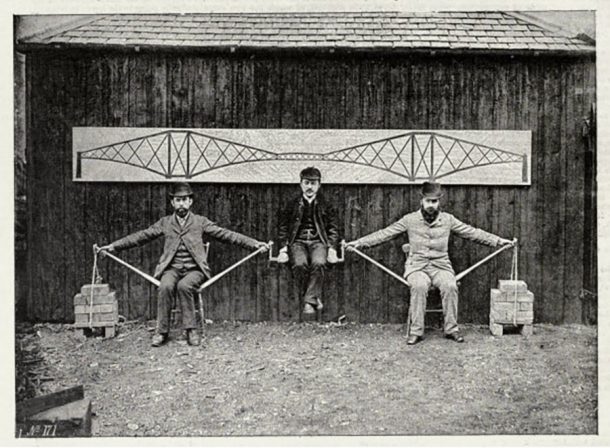
The perfectly centered building is sturdier and firmly set on an even, cleaner ground than in the first version. There are no distracting elements. The drawing on the wall looks more polished. The chairs are levelled and the brick structure holding the model on each side is clear. The two men sitting on the chairs are the same as in the previous image. Their faces show the same expression. But their bodies are now much more confident and upright, their limbs straight and symmetrical.
Even the ropes are thicker, enhancing the strength of the structure. The ropes holding the seat are shorter and were put closer to the ends of the sticks, positioning the middle seat higher. The analogy with the cantilever principle applied to the bridge became more pronounced.
Looking confident to create confidence
The most striking difference is, however, the man sitting in the middle. The insecure looking, puny boy has disappeared. In his place we find a man with a knowledgeable-looking countenance, dressed in better clothes, his clock chain partially showing. The man’s hands are firmly placed on the wooden board. His legs are crossed, revealing how relaxed and assured he is. There is even another image of this same model where he crosses his arms with confidence, looking almost defiantly at the camera. He is telling us that he will not fall.
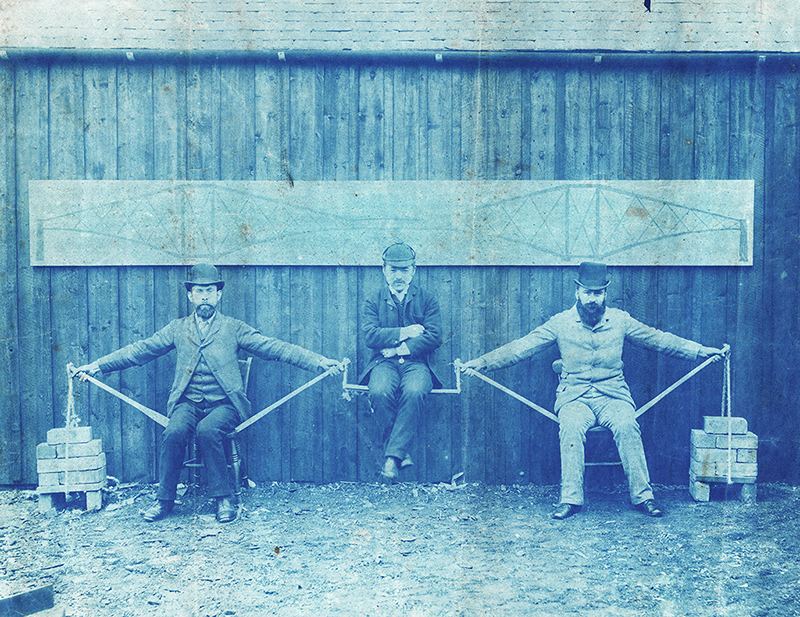
The 1887 model is clearly much more effective in showing that the cantilever principle applied to bridges is stable and safe. More than explaining an engineering principle, it has a reassuring agency of its own. It shows how a model can be both objectively accurate and subjectively persuasive.
The well-dressed man of this second model is Kaichi Watanabe, a Japanese engineer who studied in Glasgow and who worked at the Forth Bridge construction. Keep an eye on the V&A blog: we will reveal more about his identity and tell another interesting story about how this living model kept ‘building bridges’.
Want to experience this for yourself?
The photograph of the 1885 living model can be seen until 28 January 2022 at the Building Centre in London, in the exhibition ‘Shaping Space – Architectural Models Revealed’, a collaboration between the V&A and the Building Centre.
Will you fall? A free workshop re-enacting the living model will take place 16 October 2021 at the Building Centre, generously supported by Webb and Yates Engineers. Find out more and register for the workshop.

